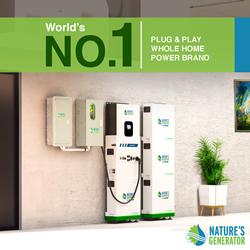For the rainwater to be fit for human consumption, it is important that the water goes through the following processes. Screening, settling, filtering and disinfection.
The right water treatment after rainwater harvesting
Aaron Pratt | Aaron's Rain Barrels & More
|
There are various stages of rain water treatment. The whole process starts even before the rainwater harvesting begins and is usually designed to make the rainwater safe and suitable for human consumption and use, especially in households.
It is recommended by experts and advisable that you undertake some major cleaning work on the roof at the beginning of each rainy season. This is to remove any type of foreign matter. This action has the positive effect of eliminating a lot of sediments, particles as well as debris that would have otherwise strained your rainfall harvesting filtering system. Usually water from the previous rains is used for this important cleaning operation in rainwater harvesting. The roof or catchment area is not the only area that requires regular cleaning. Cleaning of the water tank should also take place at the end of every rainy season. When the rainwater harvesting begins the first treatment or cleaning
process involves the removal of debris via a gutter strainer which have
to be installed carefully in the rainwater harvesting system.
Also when the rain comes into contact with the collection surface, it will tend to wash many types of contaminants off the surface and into the storage tank. These are the sort of contaminants that will get through all the filters in the rain water harvesting system that will usually deal with debris, leaves and other larger particles. These contaminants can include mold, bacteria, algae, protozoa, dust, pollen, bird feces and feathers and dead insects.
Any rainwater from rainwater harvesting that goes through this process will be fully ready for drinking and human use without any worries over its' suitability. More so because rainwater tends to be of a higher quality than water from a majority of other sources. This means that rainwater from rainwater harvesting that goes through the right water treatment will give you a final product of extremely high quality and good taste. For further information visit http://www.rain-barrel.net (rainwater harvesting) and http://www.ne-design.net (rain barrels) |
|
The content & opinions in this article are the author’s and do not necessarily represent the views of AltEnergyMag
Comments (0)
This post does not have any comments. Be the first to leave a comment below.
Featured Product


 Good systems should be
able to remove most pine needles, leaves and all other debris that will
usually fall on the roof with the rain.
Good systems should be
able to remove most pine needles, leaves and all other debris that will
usually fall on the roof with the rain.  For the rainwater to
be fit for human consumption, it is important that the water goes
through the following processes. Screening, settling, filtering and
disinfection.
For the rainwater to
be fit for human consumption, it is important that the water goes
through the following processes. Screening, settling, filtering and
disinfection.